EXHIBITION
25 february – 16 april 2023
tuesday-sunday 2-6 pm
Apollonia presents the exposition Within a hair’s breadth, Babak KAZEMI – Maryam FIRUZI, first entry in the long-term project Within a hair’s breadth, aspects of the contemporary Iranian photography
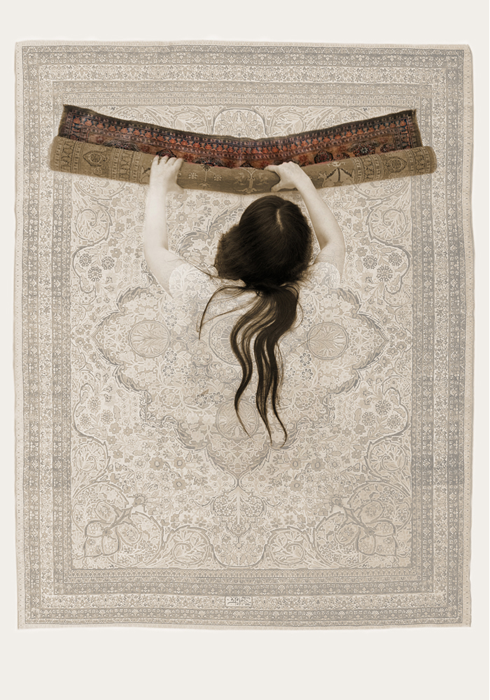
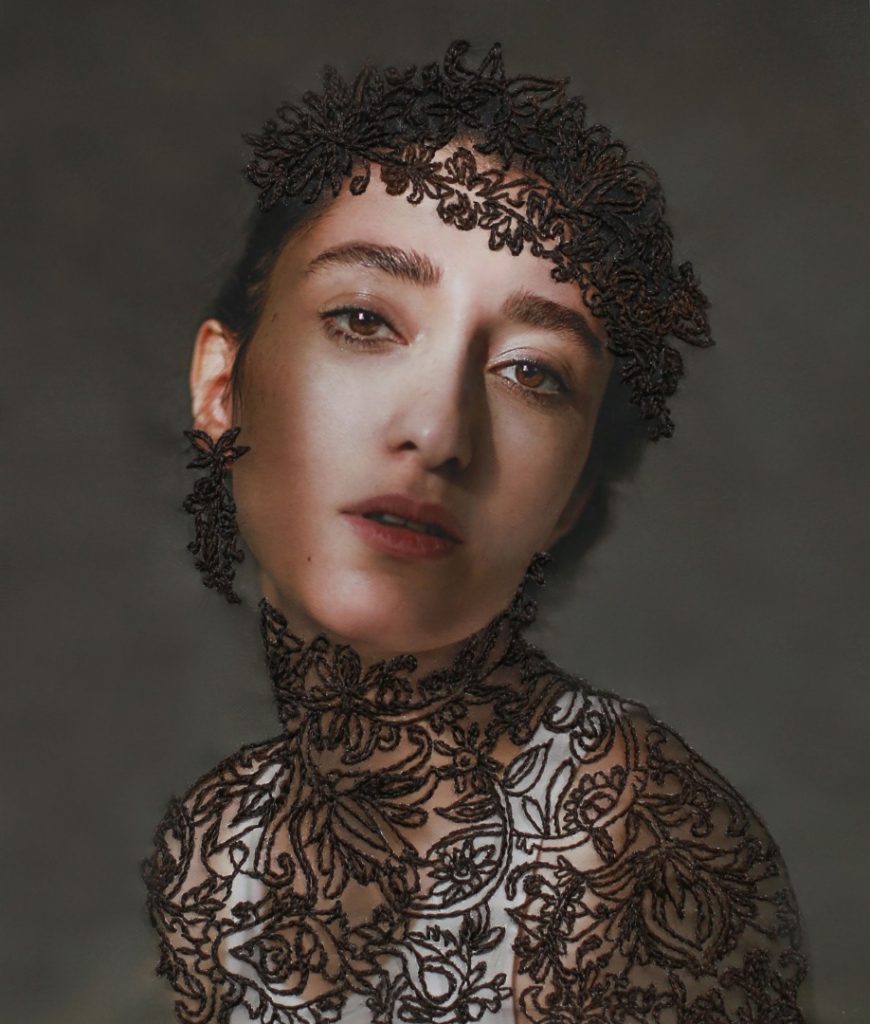
Babak Kazemi
Babak Kazemi is a self-taught photographer, born in 1983 in Ahvaz, Iran. Among the covered topics, Kazemi explores in his photo series A report for D’Arcy the history of the Khuzestan province where he grew up, focusing on the impact of oil production on the region. However, he also broadens his perspective to the rest of the country, tackling in Common memories his generation’s collective recording of military service, of the rigidity of power and self-sacrifice.
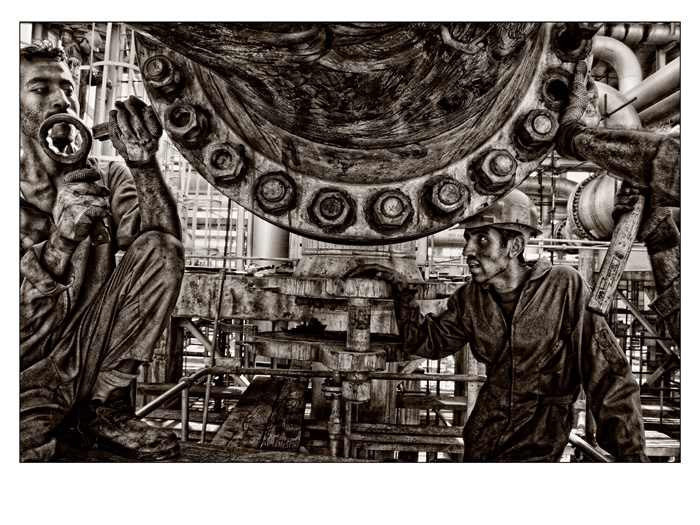
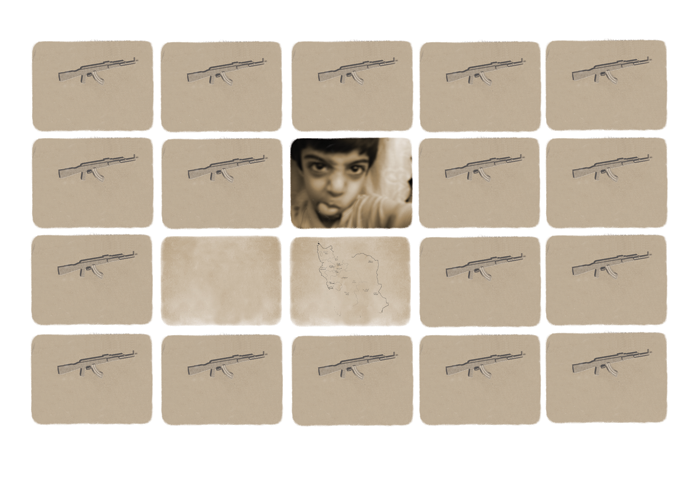
« Military service in Iran, which remains as a common memory among boys, is obligatory, and there are always many men who try to find a way to escape from going to military service. The time when I was passing my military service was at the same time as the famous 2009 presidential election in Iran, and all happenings after that involving the Green Movement. I had to go on streets and fight against the people of my country whether I was personally positioned against or with them. It was my responsibility as a soldier for Iran. I didn’t have the right to choose anything but this. IT WAS AN ORDER! And all I could say was : “SIR, YES SIR!” »
In a more intimate tone, his series The exit of Shirin and Farhad, revisits this 16th century tragedy to comment on the contemporary struggle of lovers who must leave their country to find the freedom to love. For him, the story reveals the historical roots of what we know today as forced migration and immigration. The figure of King Khosrow also provides him with a powerful symbol of the kind of control and suppression of emotions that men and women are still subjected to today. However, Kazemi’s message is that love can overcome even the most dire situations.
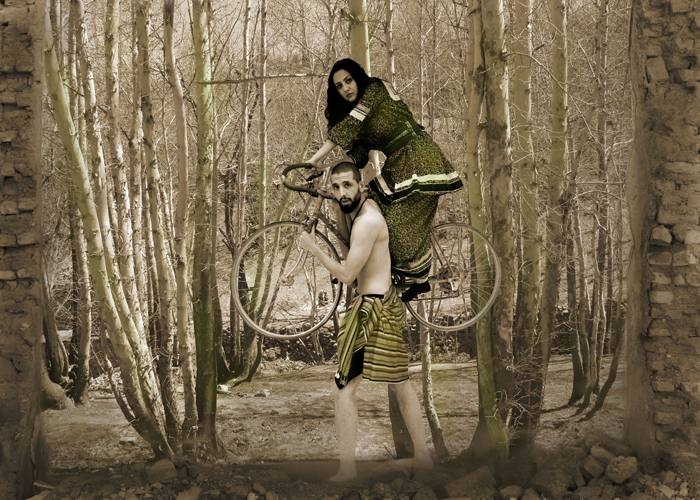
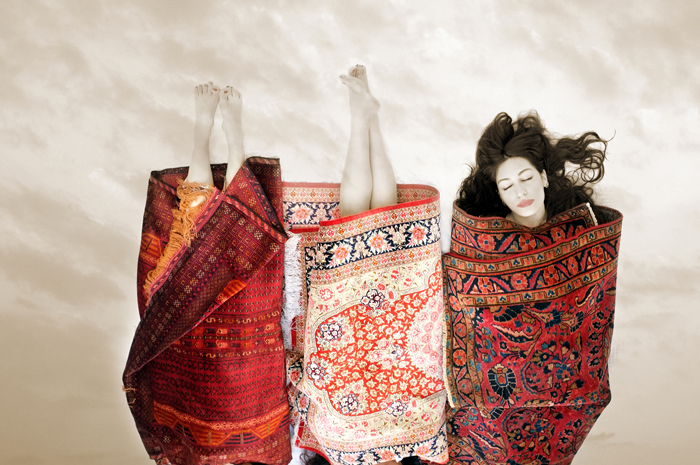
Maryam Firuzi
Born in 1986 in Shiraz, the Iranian artist Maryam Firuzi lives and develops her art in Tehran. Though she started off studying cinema, she also works as a photographer, writer and poet. In the exposition Within a hair’s breadth, Apollonia presents 4 of her photographic series, with subjects ranging from the place of (feminine) corporality in the world to the perspective, sensitivity and artistic expression of women regarding a social and political reality, both in Iran and abroad.
Womens’ bodies, which play a significant part in today’s social dialog as a subject, is at the very heart of the artist’s work. In 2018, her Concealment series tackles the place of visibility for womanly bodies in history and culture. With her latest work to date, Before our chance to watch ends vol. 2 : Gisoo – meaning « hair » in Persian – Maryam produces 18 photo portraits of women, which she then embroiders, using her subjects’ hairs as threads.
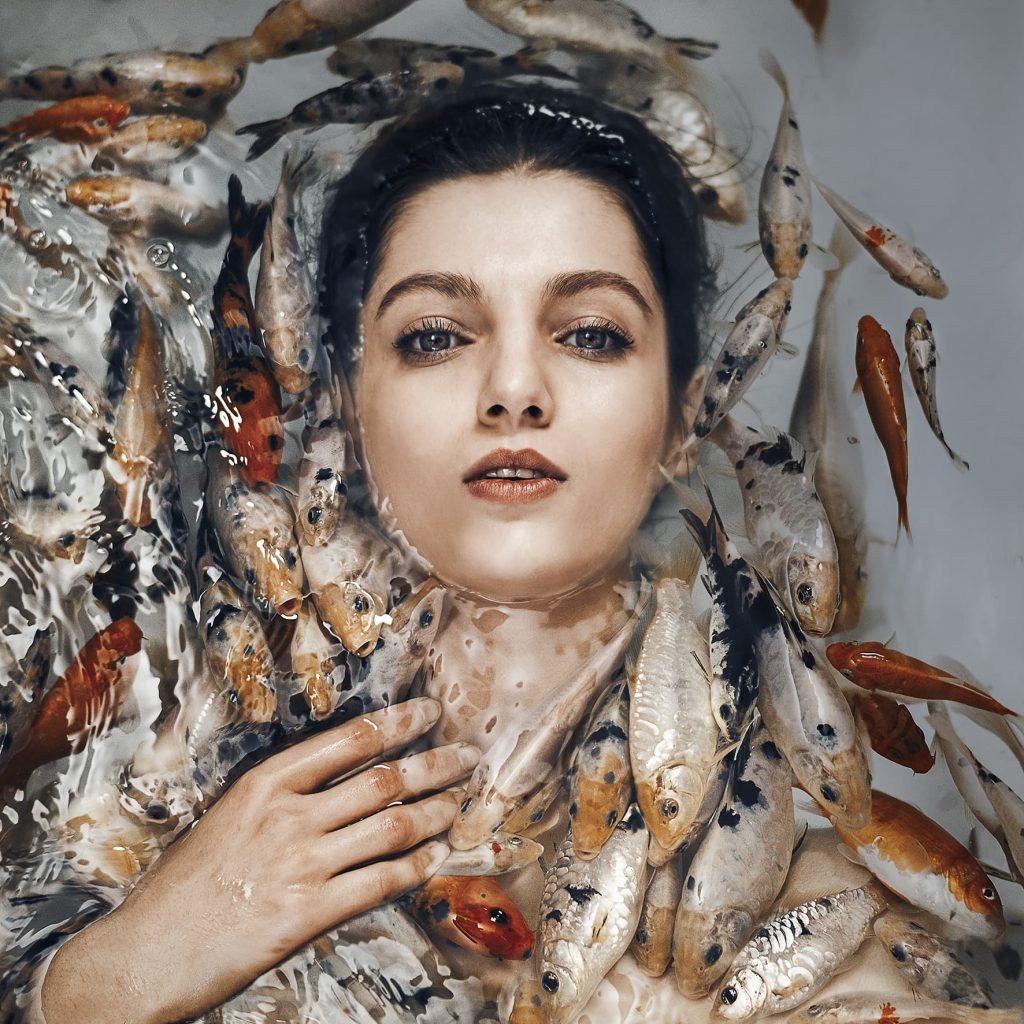
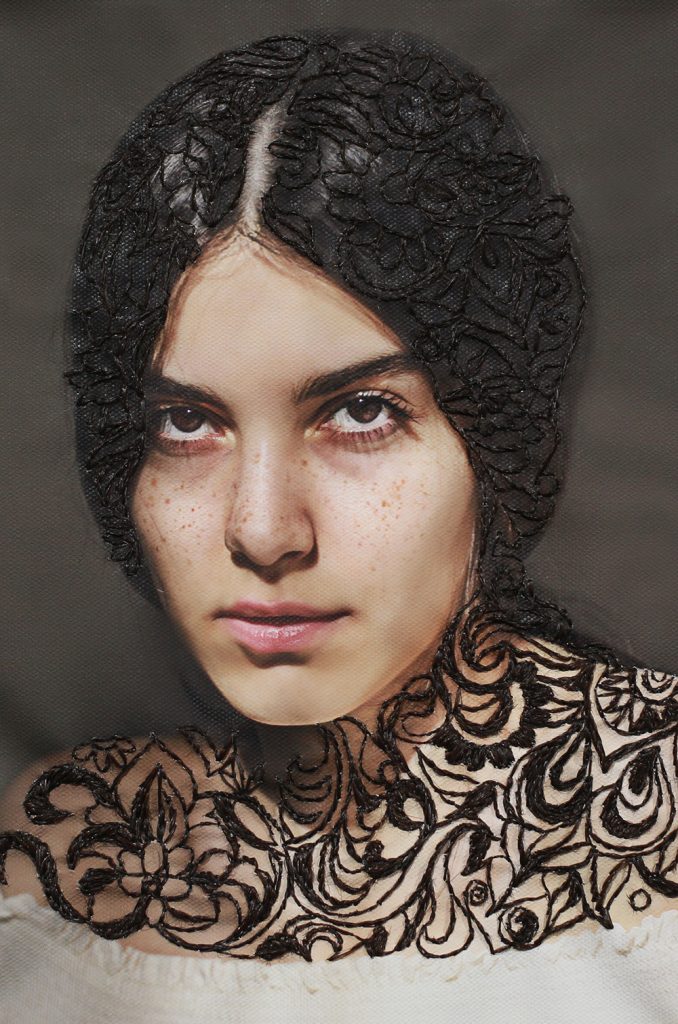
« Hair is one of the last elements of the human body to decay. Still, the most impressive image I have ever seen is the piles of hair from the Auschwitz victims in the Polish Museum; hair becomes the embodiment of the souls that are still alive in the strands. From myth to literature, from popular culture and fairy tales to social punishments, the role of hair is evident and among all these, the connection between hair and mourning is still special and customary in many tribes; in the Bakhtiari societies, women still cut their hair, and girls shave their heads when they lose the loved ones. This ritual was common between Easterners and Westerners; in Shahnameh, Farangis cuts her hair in mourning for Siavash as same as Achilles who cuts his hair out of grief over the death of his close friend. In mystical literature, hair has different functions both material and spiritual. Paradoxically, in Islamic law, when the hair of a woman is cut, Hijab would not be anymore an obligation; it is as if the hair which was once an ornament on the woman’s face has become a dead organ and is no more seductive or desirable.For me, hair is like the threads of the soul, whether over the shoulders or being cut from the heads. I asked my dear friends to stand in front of the camera and then give me their hair to sew them on their printed photos or cover their bare head with their hair and recapture them. »
Maryam Firuzi also extends her themes of interest to the geographical, sociological and architectural aspects of her Iranian reality. Whereas Reading for Tehran streets offers a symbolical and colourful revitalization of the Iranian capital’s tragic landscapes, her 2021 series Scattered Memories of Distorted Future, following the pandemic, allows for a feminine artistic expression and reconstruction of her country’s ruins.
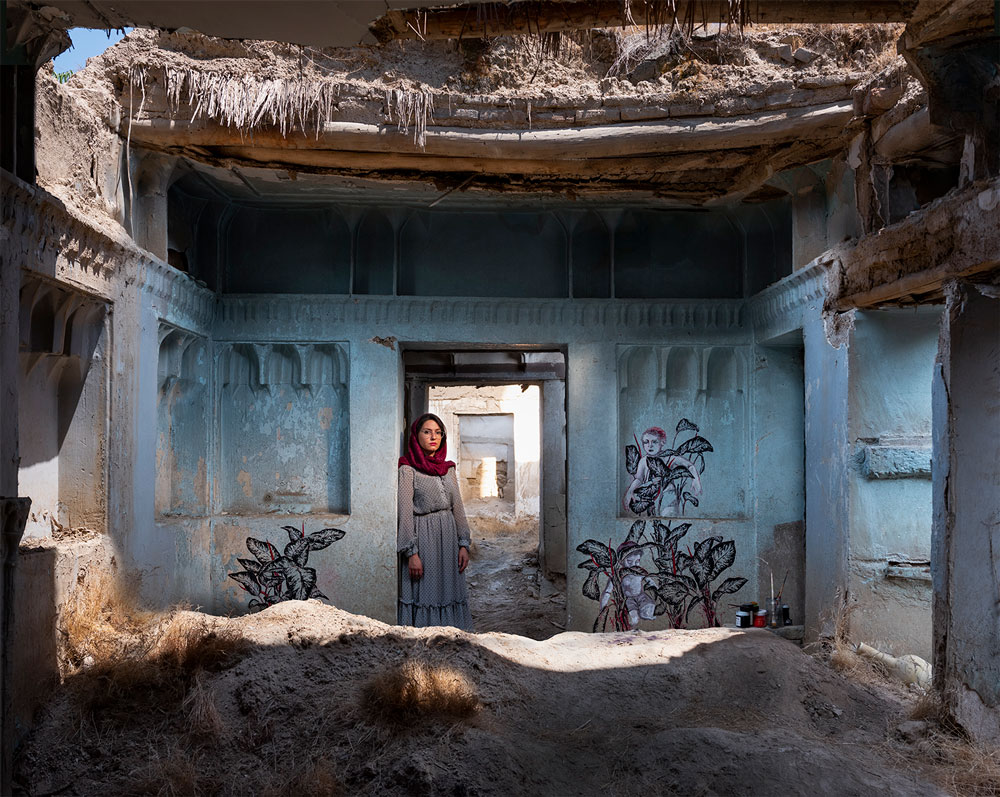

« What effect does the artist have on this state of ruin? What role do we have in the ruins of mankind’s constructions/creations? In this series, ruins have become a metaphor for pain. Here, between a silent past and a distorted future, I invited female painters to paint what they like in abandoned places; a painting on the masculine history, a picture on the face of the past, and an unanswered question for the future. »